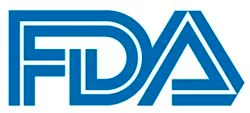Article
FDA Places Partial Clinical Hold on Study Evaluating Emavusertib in Relapsed/Refractory AML or High-Risk MDS
Author(s):
The FDA has placed a partial clinical hold on the phase 1/2a TakeAim Leukemia trial, which is evaluating emavusertib as a single agent and in combination with azacitidine or venetoclax in patients with relapsed or refractory acute myeloid leukemia or high-risk myelodysplastic syndrome.

The FDA has placed a partial clinical hold on the phase 1/2a TakeAim Leukemia trial (NCT04278768), which is evaluating emavusertib (previously CA-4948) as a single agent and in combination with azacitidine or venetoclax (Venclexta) in patients with relapsed or refractory acute myeloid leukemia (AML) or high-risk myelodysplastic syndrome (MDS).1
With this decision, the regulatory agency has requested additional information from the trial, including findings associated with the death of a patients with relapsed/refractory AML who experienced rhabdomyolysis, among other conditions, which has previously been cited as a dose-limiting toxicity (DLT) experienced with the investigational agent.
The FDA has also requested safety, efficacy, and other information pertaining to this toxicity, and the determination of the recommended phase 2 dose (RP2D) for emavusertib in this research.
With this hold in place, no new patients will be enrolled to the trial, but participants who are currently deriving benefit from the investigational treatment have the option to continue with treatment at twice-daily doses of 300 mg or lower.
“We are committed to ensuring the safety of patients in our studies and to working collaboratively with the FDA to develop therapies that meaningfully improve and extend patients’ lives,” James Dentzer, chief executive officer of Curis, Inc., stated in a press release. “Given the clinical profile of emavusertib observed to date, we are hopeful that the study can be resumed soon, after appropriate review. We continue to be confident in the potential of emavusertib to address the high unmet need of patients with AML or MDS.”
The open-label, single-arm, dose-escalation trial leveraged a 3+3 design to examine the safety and efficacy of emavusertib. A total of 22 patients were enrolled to the trial, 11 of whom had AML; the other 11 had high-risk MDS.2 These patients received emavusertib at 1 of the following twice-daily doses: 200 mg, 300 mg, 400 mg, and 500 mg.
The primary objective of the trial was to determine the maximum tolerated dose and the RP2D of the drug based on safety and tolerability findings, as well as DLTs, biologic activity, and pharmacokinetic and pharmacodynamic activity.
Data presented during the 2021 EHA Congress revealed that emavusertib produced benefit in patient populations whose disease is characterized by spliceosome or FLT3 mutations.3 As of December 16, 2021, 49 patients with relapsed or refractory AML or MDS had received the agent at 200 mg, 300 mg, 400 mg, or 500 mg.
When administered as a single agent, emavusertib was found to have preliminary activity with acceptable tolerability in patients with relapsed or refractory AML or high-risk MDS.4
Specifically, in 5 patients who had U2AF1 or SF3B1 spliceosome–mutated, relapsed/refractory AML, emavusertib produced a CR or CR with partial hematologic recovery (CR/CRh) rate of 40%. Notably, both participants who had CR/CRh were on the study for longer than 6 months and achieved minimal residual disease negativity. Additionally, 3 patients with elevated blast counts were found to experience a tumor burden reduction of at least 50% in their counts.
Among 7 patients with U2AF1 or SF3B1 spliceosome–mutated, relapsed or refractory MDS, emavusertib induced an objective response rate of 57%. One patient experienced a CR in the bone marrow and went on to receive stem cell transplant after 1 cycle of treatment. Moreover, 4 patients were noted to have a 50% or higher reduction in their blast counts.
In 3 patients who had relapsed or refractory AML and whose tumors harbored FLT3 mutations, emavusertib produced a 33% CR rate. The mutation was noted to be eradicated in 2 patients, which underscores the disease-modifying potential of the agent. Two of the patients in this group who had elevated blast counts achieved a reduction in their counts of 50% or higher.
The agent was well tolerated across the dose levels examined, including at the RP2D, which was determined to be 300 mg twice daily. Treatment-related toxicities observed with the agent were manageable and reversible. Notably, no dose-limiting myelosuppression, cumulative toxicities, or grade 4 or 5 effects, had been observed.
The biotechnology company shared plans to provide updated guidance on the timing of discussing the potential for a rapid registrational path for emavusertib with the FDA after the hold has been addressed and resolved, and the associated impact on the trial can be determined.
Although the regulatory hold does not impact the phase 1/2 TakeAim Lymphoma trial (NCT03328078), which is evaluating emavusertib in adult patients with relapsed or refractory hematologic malignancies, the company decided to pause the enrollment of new patients, pending the resolution of the hold on TakeAim Leukemia.
References
- Curis announces FDA partial clinical hold for TakeAim Leukemia study of emavusertib (CA-4948). News release. Curis, Inc.; April 4, 2022. Accessed April 4, 2022. https://prn.to/3NG7c1g
- Dose escalation/expansion trial of CA-4948 as monotherapy and in combination with azacitidine or venetoclax in patients with AML or MDS. ClinicalTrials.gov. Updated March 31, 2022. Accessed April 4, 2022. https://clinicaltrials.gov/ct2/show/NCT04278768
- Curis announces positive updated data from ongoing phase 1/2 study of CA-4948 monotherapy in patients with relapsed or refractory acute myeloid leukemia and myelodysplastic syndromes. News release. Curis, Inc.; June 11, 2021. Accessed April 4, 2022. https://bit.ly/3qXfuax
- Curis announces updated data with additional encouraging clinical activity in phase 1/2 study of CA-4948 monotherapy in targeted patients with relapsed or refractory AML and MDS; and initial clinical data from phase 1 study of CI-8993 in patients with relapsed or refractory solid tumors. News release. Curis, Inc.; January 6, 2022. Accessed April 4, 2022. https://yhoo.it/3FaUBO1







%20u.jpg?fit=crop&auto=format)

